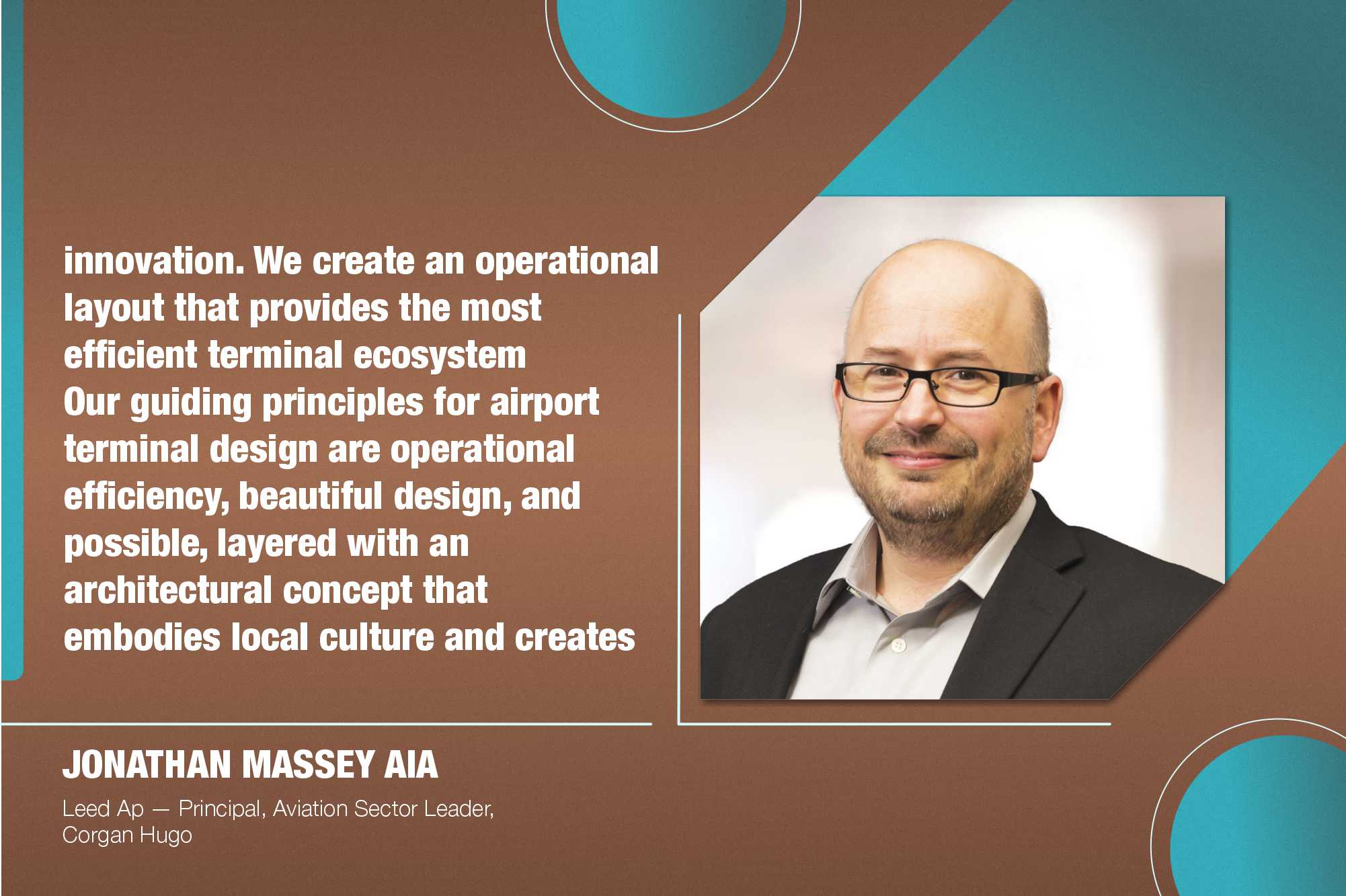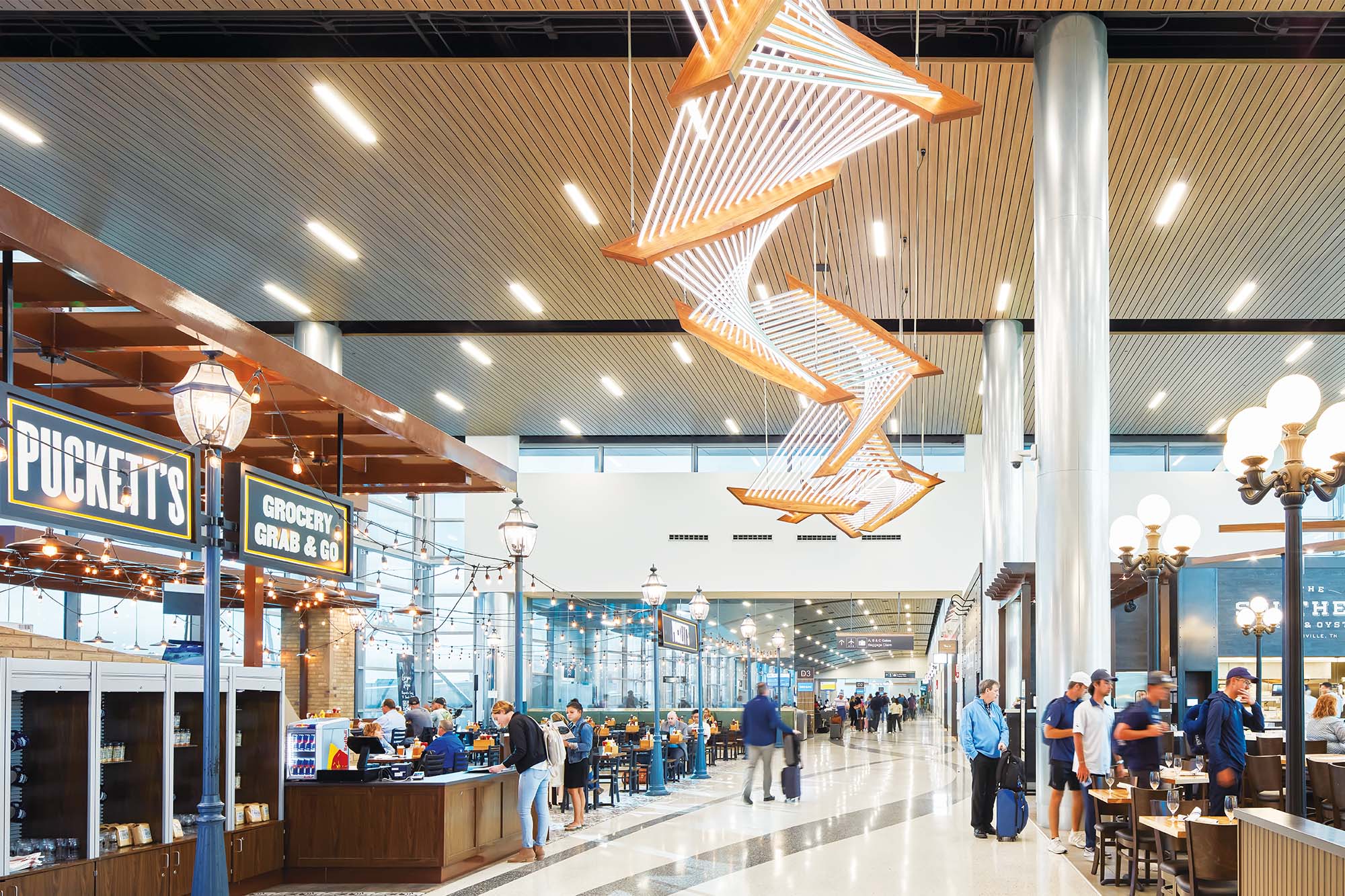Corgan Hugo data-driven approach to airport design

“Our guiding principles for airport terminal design are operational efficiency, beautiful design, and innovation. We create an operational layout that provides the most efficient terminal ecosystem possible, layered with an architectural concept that embodies local culture and creates a beautiful human experience.” Jonathan Massey AIA, LEED AP — Principal, Aviation Sector Leader, Corgan Hugo
What guiding principles or design philosophies do you prioritise when conceptualising airport projects, and how do these principles shape the overall architecture?
Our guiding principles for airport terminal design are operational efficiency, beautiful design, and innovation. We begin by creating an operational layout that provides the most efficient terminal ecosystem possible within the given site. Layering on top of this ecosystem is an architectural concept that creates an iconic statement, embodies the local culture, and creates a beautiful human experience. Our firm’s internal research and innovation group focuses on technology and the human experience and then creates a custom experiential objectives plan, infusing the design with innovative new ideas.

How do you leverage technological advancements and innovation to enhance airport infrastructure’s functionality and aesthetics?
Corgan’s internal research and innovation group, Hugo, was created to enable our designs to look ahead and design for today and tomorrow. Hugo explores social trends and human behaviour to create experiential objectives for our designs, which define a roadmap for our designers. They use a bespoke tool called predictive design, which we have developed, to explore the impact of changing technologies and transport modalities on our work. Our designers culminate the findings of these explorations into exciting forms and spaces, thus creating holistic and beautiful architectural forms.
In your experience, how do you achieve a balance between architectural aesthetics and airports’ practical operational needs?
In our experience, a balanced solution comes from a design team that understands all aspects of aviation planning, operations, design, and construction. These elements are all interwoven and should not be considered as independent issues. A genuinely balanced design weaves all aspects of a terminal into a cohesive vision. Our architects are trained to create designs that balance multiple stakeholders’ requirements, systems, and constraints into a coherent solution.

What sustainable design strategies do you incorporate into airport projects to minimise environmental impact and promote energy efficiency?
Our focus in terms of sustainable design is multi-faceted. We begin by creating a sustainability strategy unique to each project, incorporating the constraints and objectives of the client. However, the common foundational element of our approach to sustainability is reducing carbon. Whether tracking and minimising embodied carbon in the materials and construction methods we use or helping to reduce carbon emissions by providing an efficient operation or a simple and efficient construction sequence, this is always a primary focus. Other strategies we discuss with our clients are materials reuse, re-purpose versus replacement timber-based construction methods, and energy and water conservation.
Can you discuss how human-centred design principles influence your approach to creating spaces within airports that prioritise passenger comfort, efficiency, and safety?
Hugo, our internal design research and innovation group, is dedicated to understanding how humans interact with the built environment and creating strategies for elevating their experience at every step of their journey. Our journey mapping process, for example, includes an intense investigation into how passengers use an existing terminal. We process the data to perform a gap analysis on where passenger needs are not being met and then form actionable strategies for improvement.
What are some of the most challenging aspects of designing airport infrastructure, and how have you innovatively addressed these challenges in your projects?
One of the most challenging aspects of terminal design is balancing the operation’s needs with the travelling public’s needs. The ideal terminal is extremely efficient and wonderful for the passenger to experience. An example is creating spaces intuitively guiding passengers along their journey without signage or other interventions.
For more details , Visit : https://www.corgan.com/
Cookie Consent
We use cookies to personalize your experience. By continuing to visit this website you agree to our Terms & Conditions, Privacy Policy and Cookie Policy.






